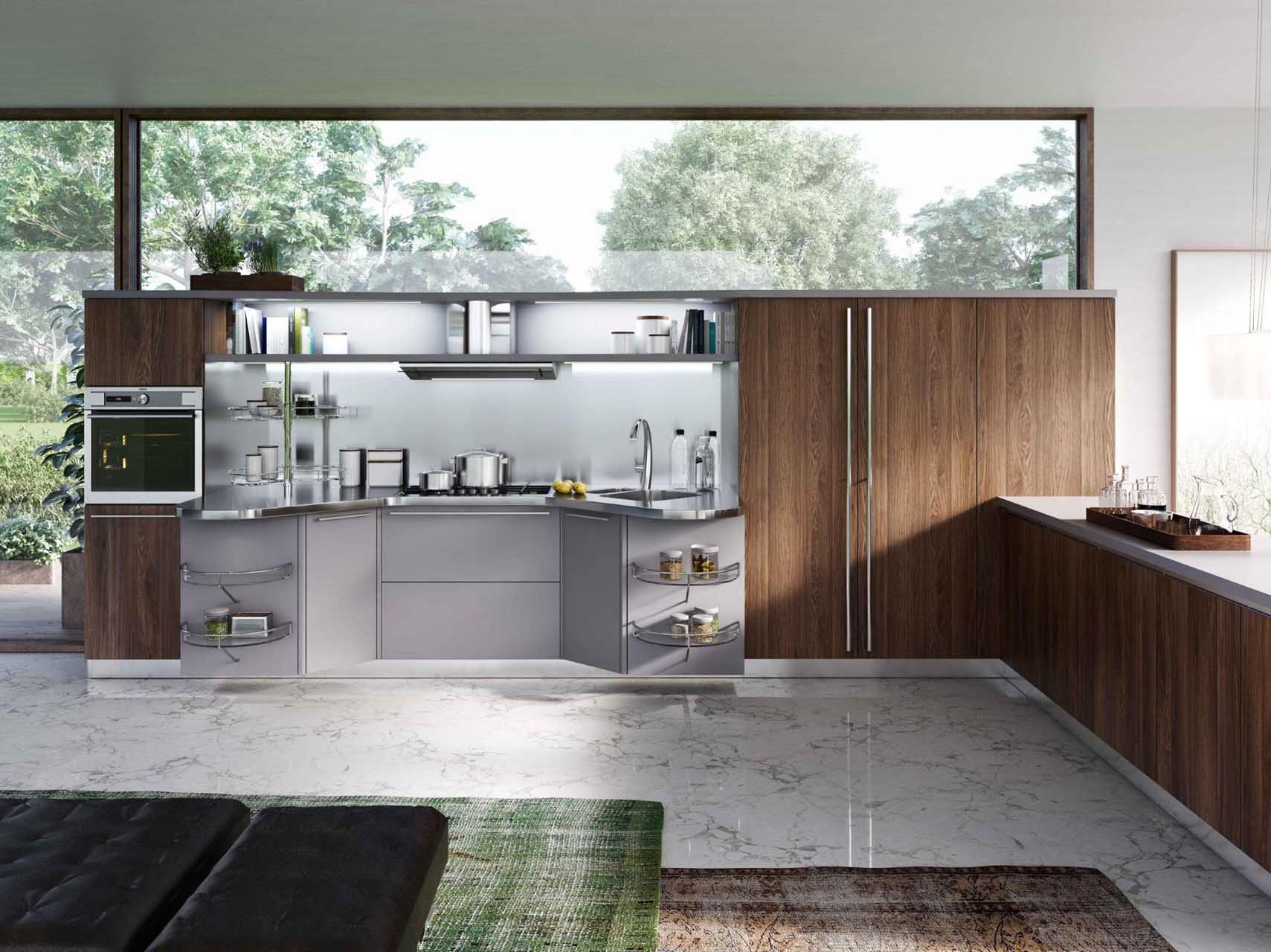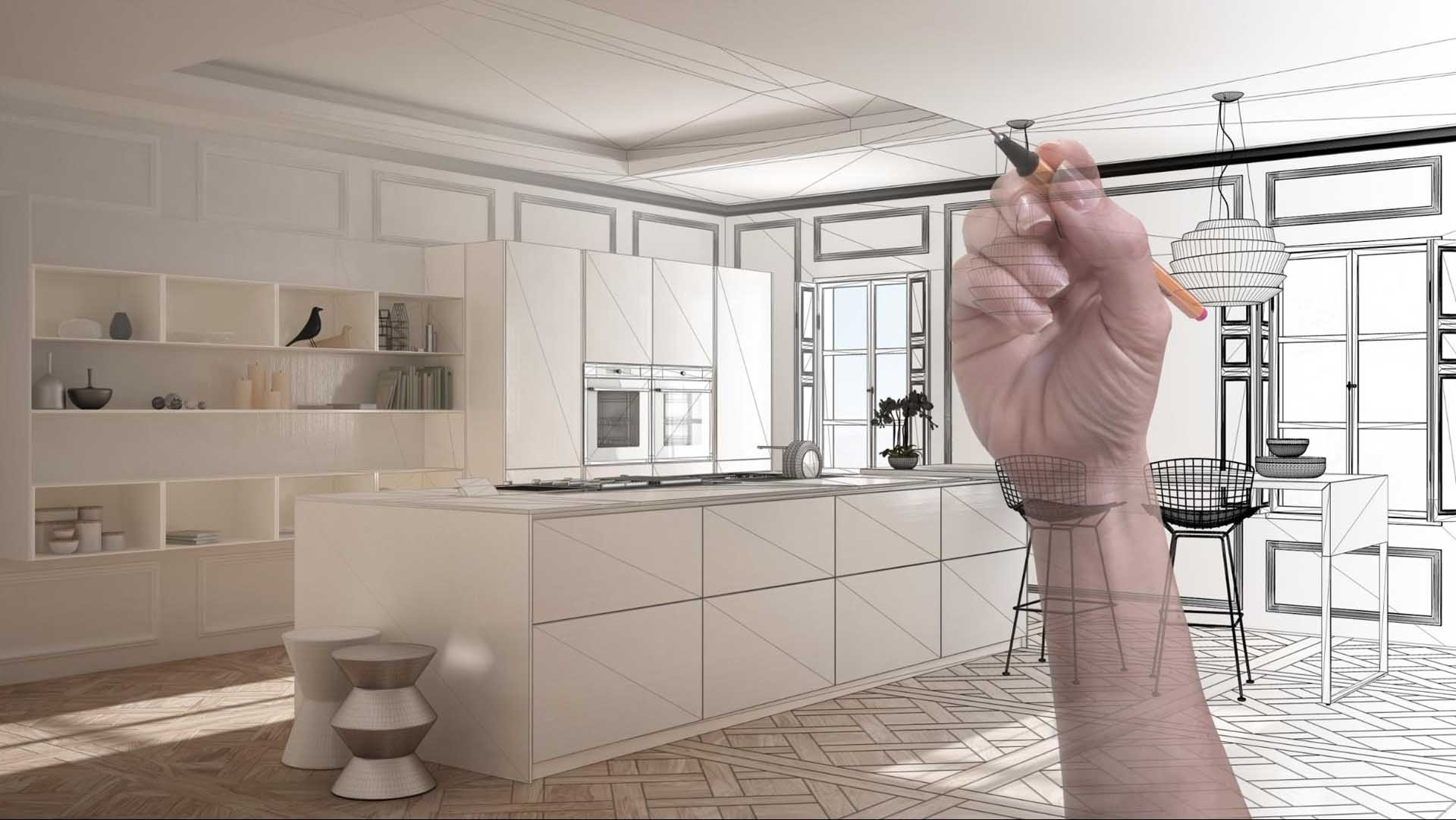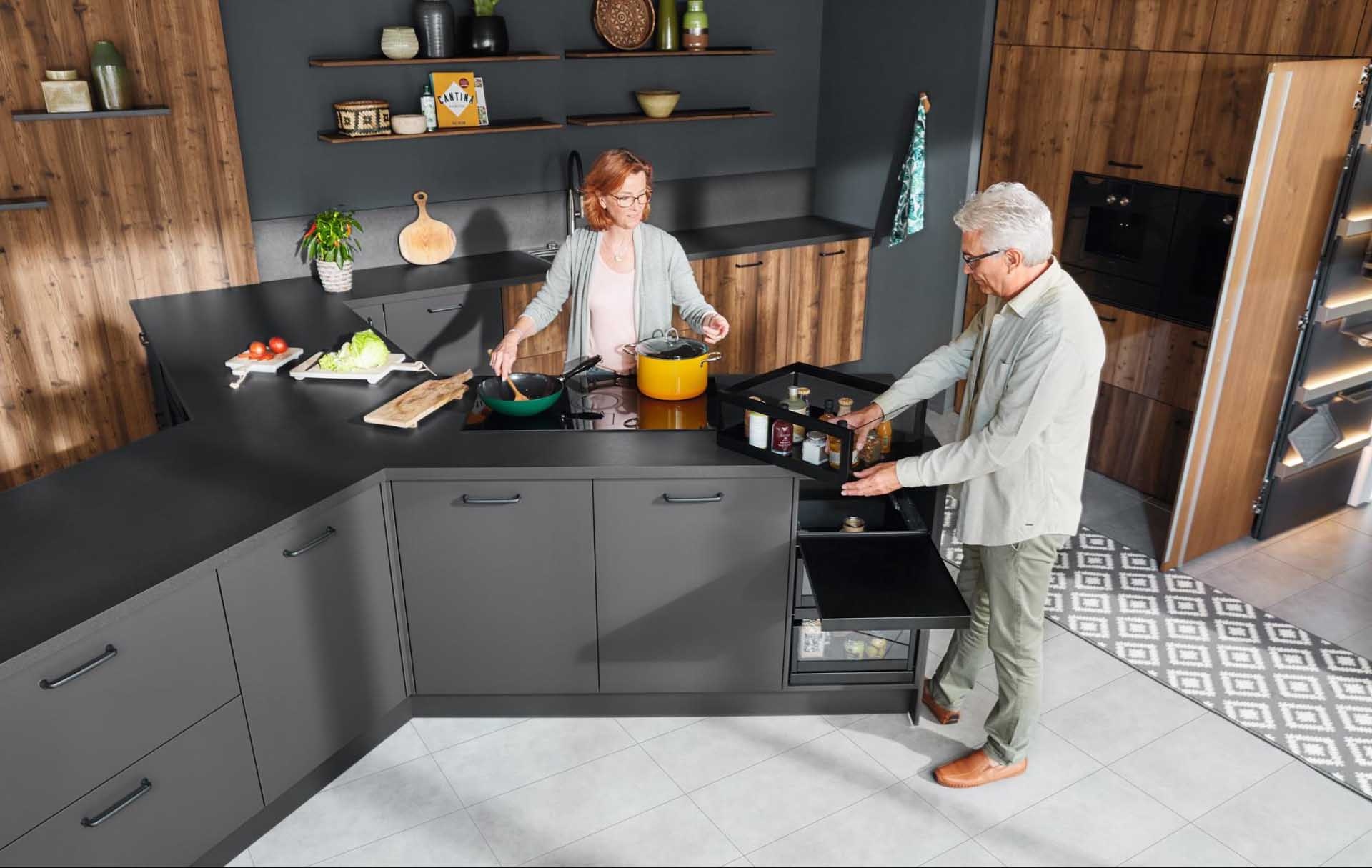
Everything you need to know about planning a kitchen - Interview with Erzsébet Ács

When it comes to designing a home or a house, two special places stand out: the kitchen and the bathroom. Planning these is a complex task: it’s not just ergonomics, engineering choices and technical solutions, but visual design as well, and this is what makes it a real challenge. Making kitchens perfect for their users is crucial. We talked to Erzsébet Ács, President of the National Association of Interior Decorators about the role of kitchens in modern homes, how this is changing, and the most important design principles and trends.
The kitchen is the heart of our home, bearing a special significance in family life, whether it’s a regular week or the holiday season. How is the role of kitchens changing these days?
The world has changed in the past 10-20 years. Kitchens have once again truly become central to personal and family experiences. We welcome guests in our homes, we cook for our friends and family members, children take part in kitchen work: we’re witnessing the renaissance of family-centered culinary culture.

People become more open to change as well, we travel abroad and gain a lot of knowledge and experience about the world in the process. We go to restaurants, try out new things, and a desire awakens in us to recreate these special moments. We want to be able to serve sushi for our friends, or to have a barbecue – we want to cook restaurant-level meals. These growing demands are strengthening and reforming the role of kitchens in our lives.
We see a surge in American-style kitchens where family activities are no longer limited to the living room: children learn or play in the kitchen while parents cook.

What are the functional aspects of planning a kitchen?
- Arriving back from the shop: Right after you get back from the grocery store or supermarket, you put down the heavy bags and start packing away food – either straight into the fridge, or you may place them on the countertop first. The most important thing is to have sufficient space around these work areas – the fridge, for example, where you may place the bags and the ingredients temporarily before putting them away or preparing them for further use.
- Keeping it clean: the dishwasher should be close to the sink. You don’t want to spill water everywhere when bringing dishes to the machine. Once again, to make this process more comfortable, having sufficient space around this work area is a must.
- Cooking: think of the inconveniently small kitchens in apartment blocks! The oven is usually stuffed in the corner right next to the wall. Anytime water boils over and you need to quickly remove the pan from the cooktop, your movements and directions are severely limited because of lack of space! It’s kitchen ergonomics at their worst. Ovens are ideally placed in the middle of kitchen furniture so that there’s sufficient space to the left and to the right.
- Ovens are placed higher and higher in modern kitchens so that you can easily see inside, without the need to bend down every time. Having space next to the oven is, once again, crucial.
- Organizing your kitchen: we used to have kitchens with only a few drawers where you mostly stored cutlery. This is changing at a fast rate. Today it’s optimal to have large, deep drawers and pull out cabinets to be able to easily see every tool you keep in there. It’s part of human nature: you only use what you can see. With spacious cabinets you can make sure that nothing gets lost in your kitchen and everything will be of use.

Apart from ergonomics, what other aspects of planning should be concerned when designing a modern and stylish kitchen?
There are endless options when it comes to materials and colors. It used to be a well-established fact that the backsplash needs to be tiled for easy cleaning, even though grout is susceptible to staining. Today there are several better backsplash solutions, including groutless tile or glass, or even the same material that is used for the countertop. These are usually much easier to clean and create a unified visual appearance for the kitchen furniture. Washable paint and wallpaper is also available. A lot of people still think that glass is a bad choice, whereas it’s really easy to clean, one of the best materials in that regard.

Classic white furniture panels are also declining in popularity. Manufacturers are aiming for a more natural look: we love natural and organic materials – our top choices for the perfect worktop are stone or granite -, these solutions come with a price however. In the ever-growing market of worktops, I’m sure everyone will find the perfect choice of materials for their kitchen, and the available sizes are also more varied than ever: 3, 4 and even 5 cm thick worktops are becoming more and more popular, while a demand for extra-thin worktops is also growing.
Handles are gone in 2019, resulting in clean, uniform surfaces. This allows us to play with handle-free cabinets, panels and machine fronts – we don’t have to hide kitchen appliances anymore, and thanks to the latest design trends these will naturally fit into the overall visual concept of our kitchen. Whether you’d like your furniture to blend in or stand out, you will find the perfect solution.

Small and major kitchen appliances are available in several shapes, forms and colors: kitchen hoods that resemble design lamps or other decor items. They can be fully integrated in countertops as well. The range of available colors and materials for these appliances is also huge: inox, black or a selection of lively colors, glass, white, grey or black induction hobs, partially or fully integrated – you name it. Sinks can be matched in material with your countertop. Exposed concrete worktops are also becoming popular: it can either blend in or stand out – it only depends on what your visual concept is. Talk to an expert to find the best options for your kitchen.
There’s a growing demand for kitchens that are fully or – with the help of a glass panel – partially connected to the living room, so that friends and family can spend time together even when kitchen work is going on.
A number of functional innovations are making kitchen life easier with the arrival and growing popularity of fully removable cabinets and drawers – the ability to easily see and look through your tools and equipment in those cabinets is resulting in a level of convenience that was inconceivable a few years ago!
What do you have to consider when designing the perfect kitchen?
- How many people are using the kitchen in total?
- How many people are usually using the kitchen at the same time?
- How much time do they spend in the kitchen and how passionate are they about cooking?
- How many tools, plates and bowls do they use? Are high-end smart appliances necessary for their kitchen work?
- Are they more into cooking or baking?
- Are there a lot of family occasions in their home?
- Are there any major lifestyle changes expected in the near future?
- How is the kitchen connected to other parts of their home?
- Are they planning to expand the kitchen?
- Are there any technical difficulties or shortcomings in their kitchen?

What are the typical mistakes when planning our kitchen?
Old habits die hard, but people are usually open for good advice and new ideas. We rarely think of how a smaller kitchen can result in better organization. Whatever the case, we have to ask the question: can it be done? There are technical obstacles and difficulties that are better left unbothered – you wouldn’t want to re-structure piping in your home, for example.
Call a designer when it’s still a relatively flexible situation. When certain technical choices have already been made, and you end up not being able to fit your dishwasher in its designated place, even designers will have a hard time solving the problem. Ergonomic problems usually fall into this category with too little space left for a convenient work area.

And it’s not all about the kitchen: you have to think of your home as a whole. The kitchen has to fit into the picture visually and functionally. With American-style kitchens, noise reduction and the role of hoods is very important. A designer will help you realize a kitchen that best suits your needs.
Careful design is not a luxury: even the smallest homes can be transformed into something special, more beautiful and better. We offer simple verbal advice for those who cannot afford full professional advice on their kitchen plans.

What can you say to those who are about to start refurbishing their kitchen or home?
As I’ve said before, everything starts with the kitchen and the bathroom. Every other room and other parts of your home can be much more easily planned, while your kitchen and bathroom is a long-term investment. It has to be really thought through: you wouldn’t want to make it over every 1 or 2 years. And refurbishing your home is a huge task. It’s a cliché but it’s true: it’s really difficult to find an architect or a designer that you can fully trust. And the best people are hard to reach, difficult to book. Everything has to be carefully planned out in advance – sufficient time is crucial. Don’t rush it and you won’t be disappointed. It’s your home and it should take time.
If you’d like to know more about kitchen planning and design, visit the Kitchen Show on March 1-3. 2019, where experts from the National Association of Interior Decorators are offering full advice on planning and designing your dream kitchen. The Association was proud to be asked by the organizers to realize a birthday design for the 10th Kitchen Show. This installation was made by the Association’s three designer (Erzsébet Ács, Judit Kővári and Tibor Takách-Batta) with help from exhibitors of the Kitchen Show.


